Walkthrough
Right On!
Right On! is a powerful little book that boldly visualized student protest of the 1960s. The data-filled report in paperback form became an accessible design classic, capturing the energetic spirit of grassroots activism.
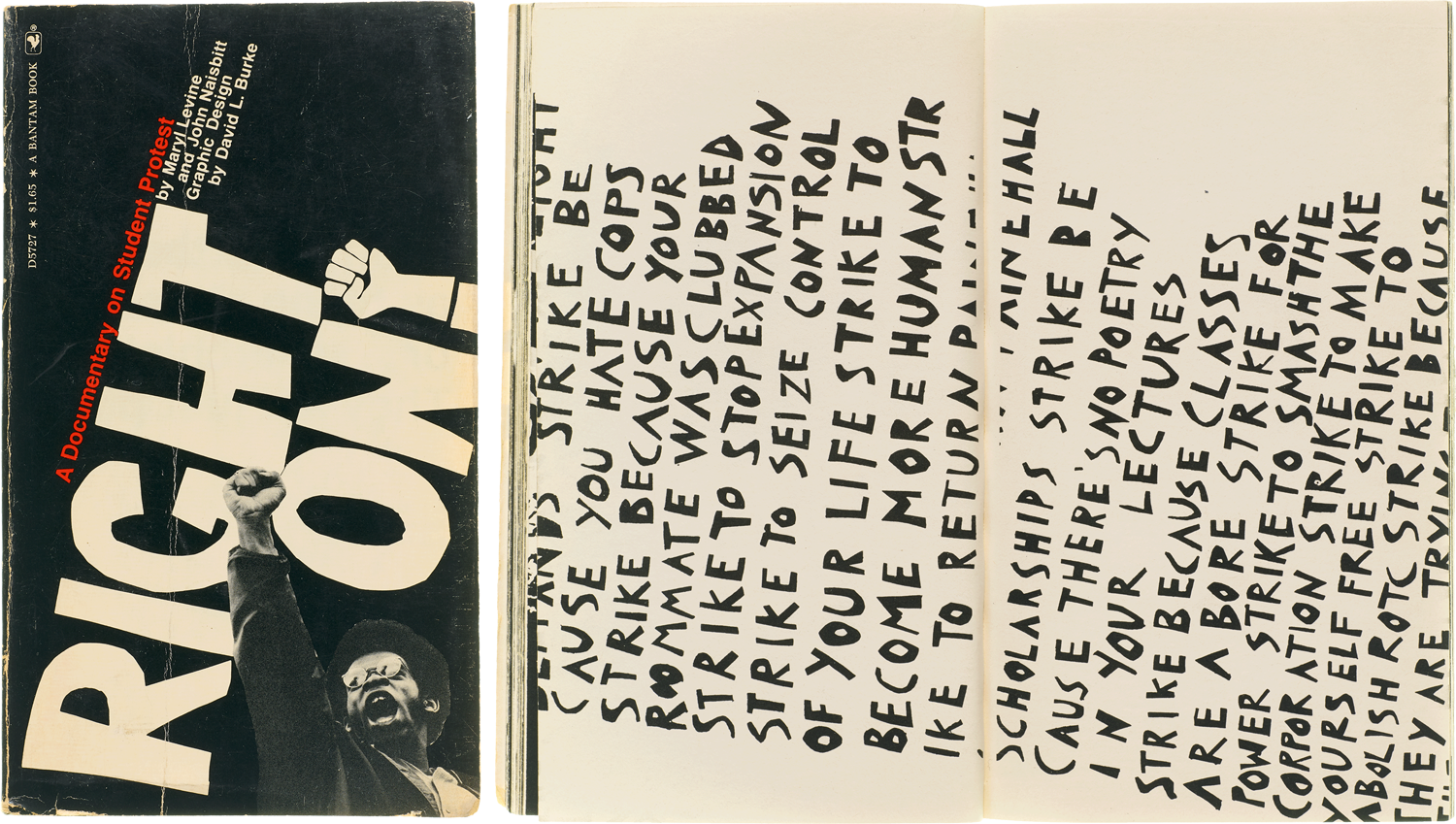
From the fight for civil rights, to the fight against the Vietnam War, late-1960s America exploded with protest. And students were often the spark plug.
In 1970, the Urban Research Corporation conducted a study of 292 campus protests held over the previous school year. It found that, along with antiwar themes, students demanded more representation in school government, greater faculty diversity, and the creation of Black studies programs.
But how to turn a dense, data-filled report into something digestible, with the energetic spirit of grassroots activism? That was the task handed to designer David L. Burke. This new project gave him an opportunity to visualize the current tumultuous moment in one of the most widely accessible formats: the paperback.
Right On!: A Documentary of Student Protest publishes results from the campus study alongside news coverage, quotes from students, and agitprop artwork. As the subtitle suggests, Burke’s design reads like a film in paperback form: Straightforward charts and survey data in sterile Helvetica serve as the only narration, which is interspersed with dynamic, full-bleed layouts featuring cinematic street photography and reproductions of expressive DIY protest graphics that seem wheatpasted onto the page.

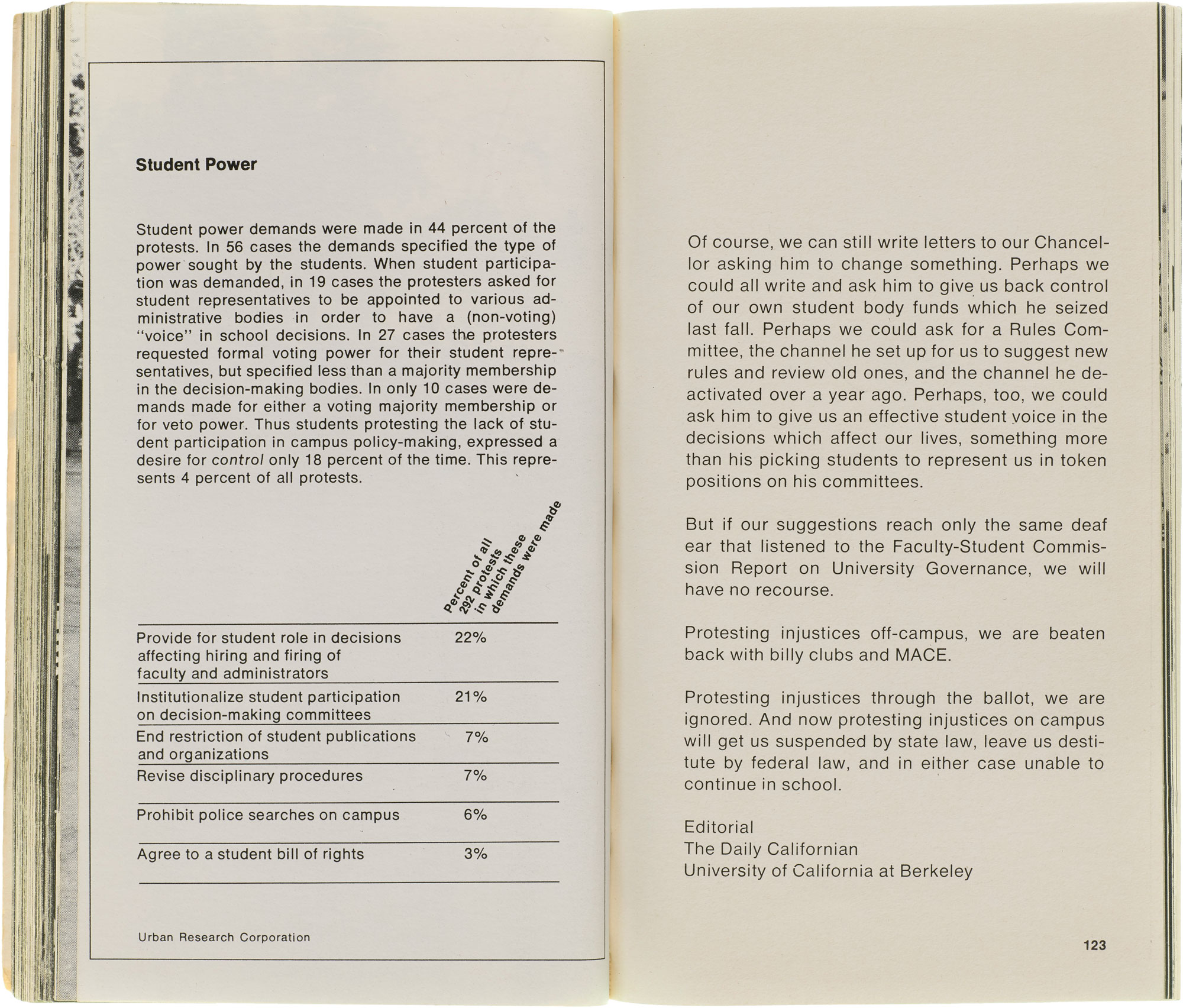
The sequential spreads above show how the furore of protest photography regularly contrasts with the banal treatment of tables and quotes from the report. Burke paces the book with drumbeat cold hard facts punctuated by the action on the streets.
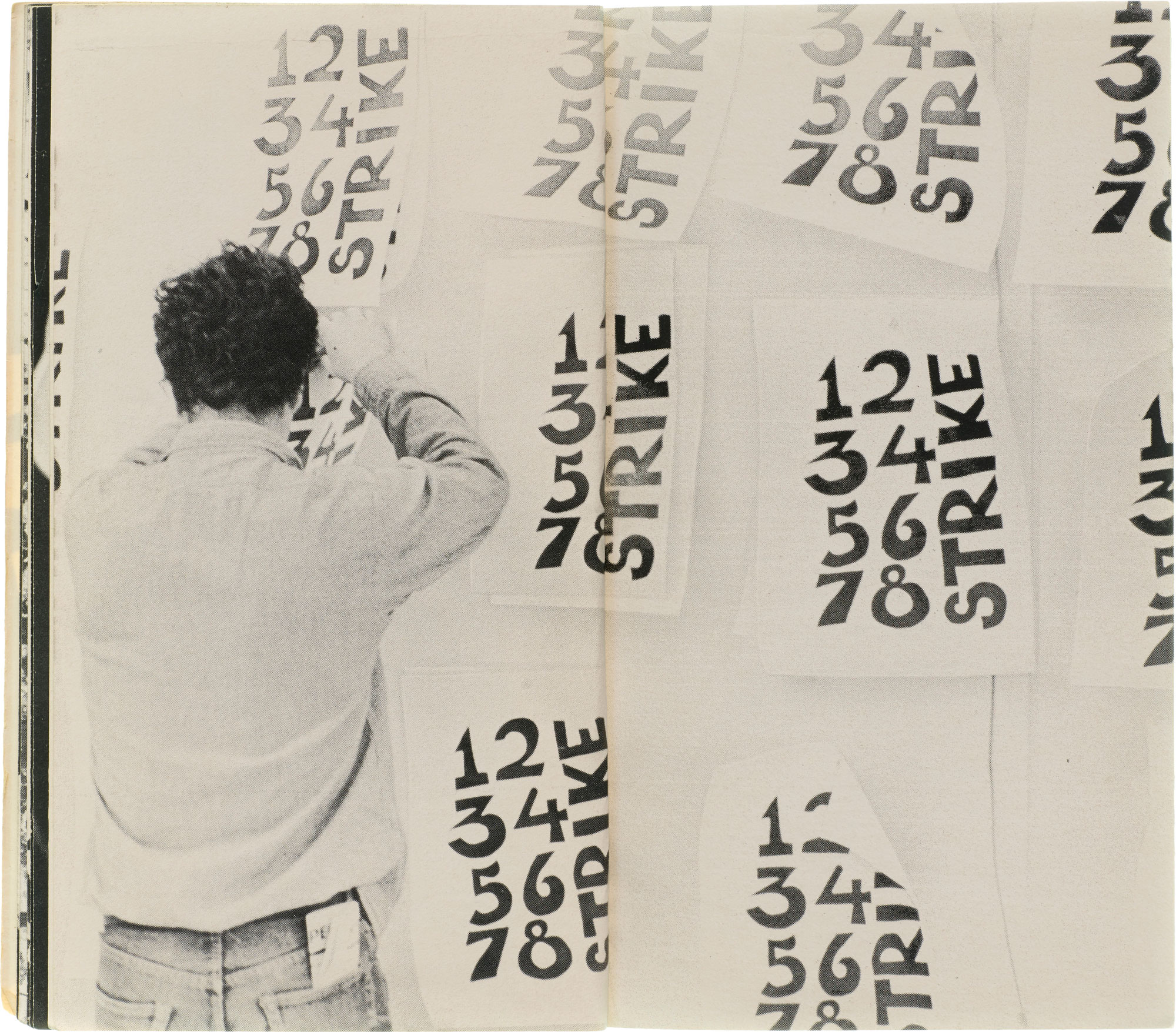
Another stark contrast is drawn between the plain, authoritative typography of the survey data and the urgent handlettering of the student artwork, which was often roughly cut for screen printing stencils or other methods of rapid and economical reproduction. Burke sourced protest posters, flyers, and other graphics from photojournalists and underground publications around the country.

When Burke wanted to reproduce a wide image, he wasn’t dissuaded by the limitation of a single squarish spread. He just let it stretch across two spreads. Turning the page only emphasizes the impact of the original poster graphic. Image: Black Student Union, San Francisco State.

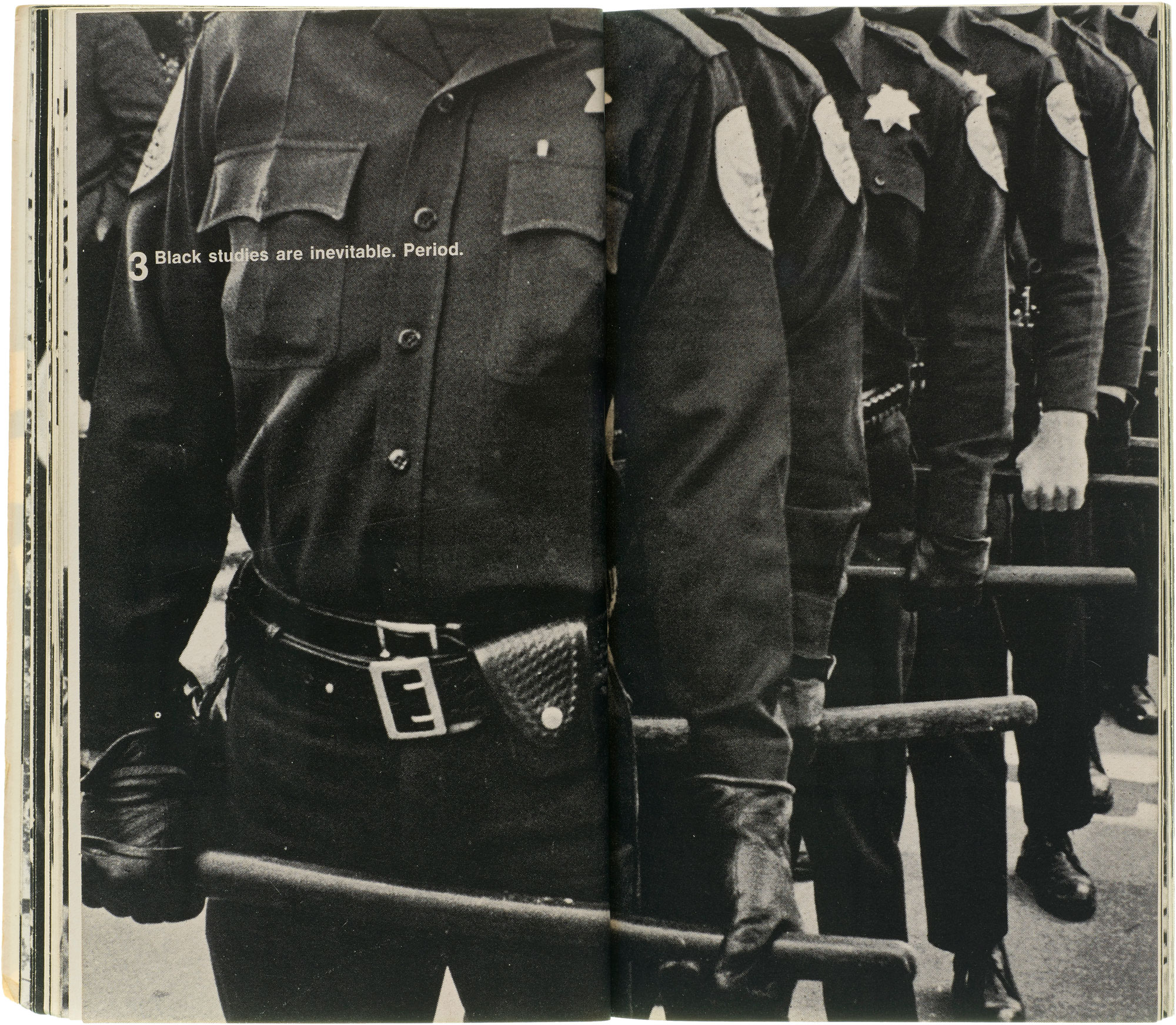
Sometimes, overlaid text is used as a routine caption for an image. On other pages, the juxtaposition of a quote and the accompanying photo is a commentary in itself.
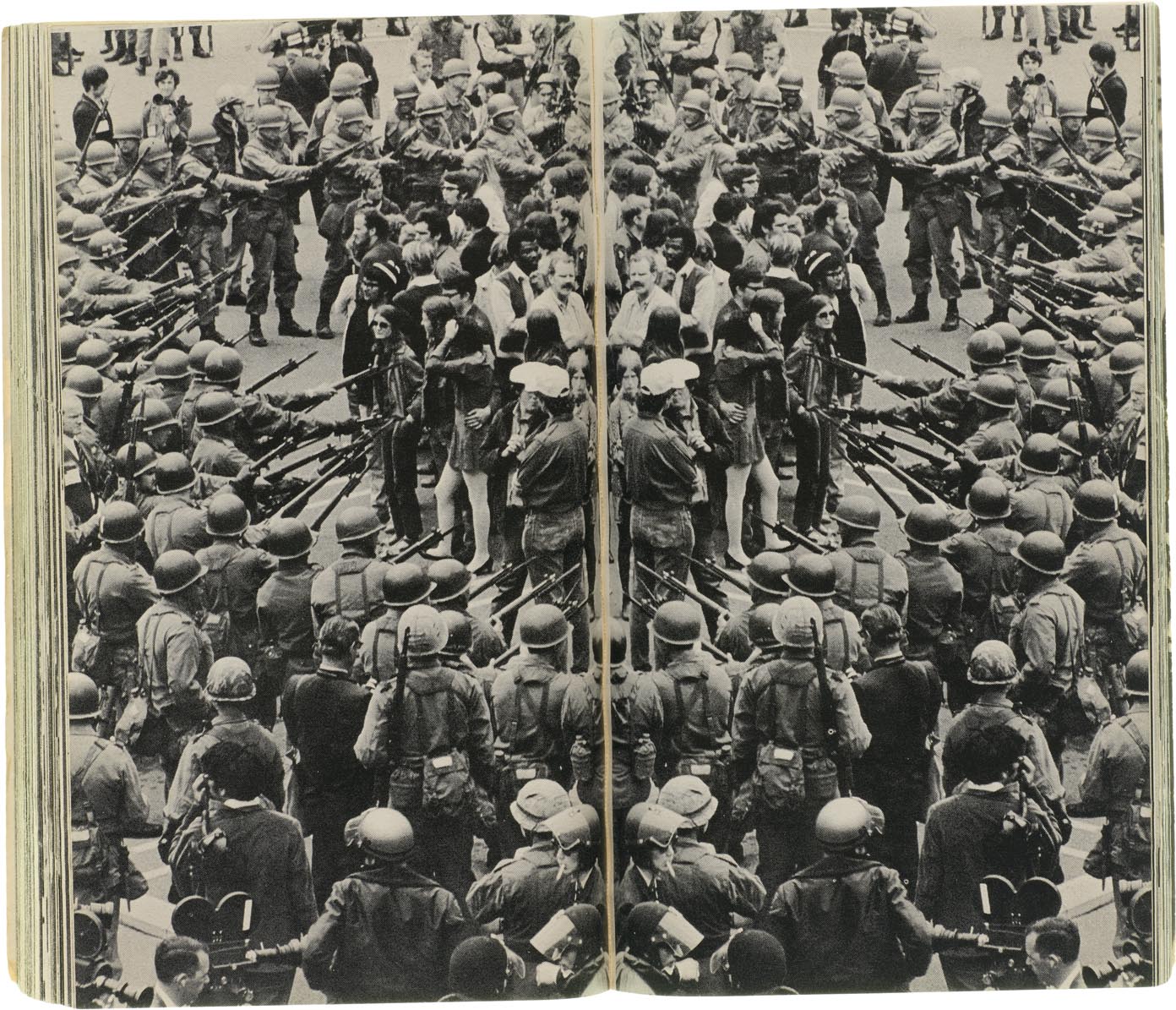
One powerful photograph pictures National Guardsmen confronting students at Sproul Hall on the Berkeley campus on May 20, 1969. Burke mirrors the image across the spread to emphasize the aggressive dominance of the armed authorities.
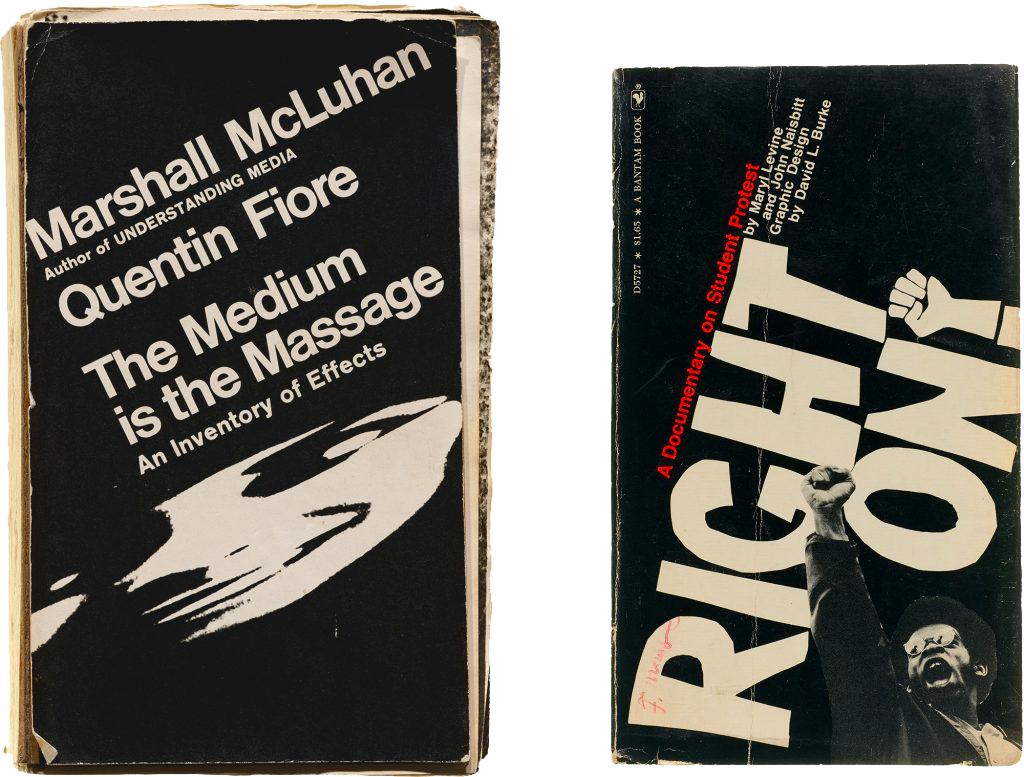
Right On! appears to have been influenced by Marshall McLuhan’s The Medium Is the Massage, a 1967 title from the same publisher, Bantam Books. Assembled by designer Quentin Fiore in a compilation that defied typographic norms and mimicked multimedia (with an intentional typo in “message” in the title), the earlier book is a seminal example of “designer as author.” In Right On!, Burke similarly animates the text, situating the students’ activism within a fittingly active page.
In 1971, Right On! was recognized by AIGA’s Fifty Books of the Year. In his accompanying notes to the entry, Burke said, “We attempted, on a severely limited budget, to capture the spirit of the conflict between the establishment and the students in a book form that can compete with other media.”
Right On! leverages the efficiencies of traditional book publishing to take its progressive message to the masses. Issued in a run of 100,000, it’s among the most widely accessible objects in Letterform Archive’s collection. One of the great things about collecting graphic design, in general, is that much of it is still available to collectors of every stripe, and Right On! is the epitome of accessibility. Next time you step into a good used bookstore, have a look for this powerful little paperback. There’s a good chance you’ll find it.
More Walkthroughs
Explore the exhibition through video and interactive close-ups of selected objects. More walkthroughs are coming soon. Sign up to be notified.